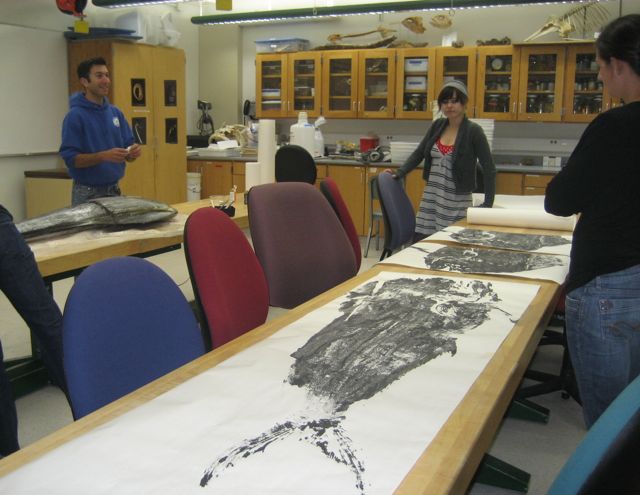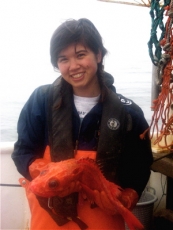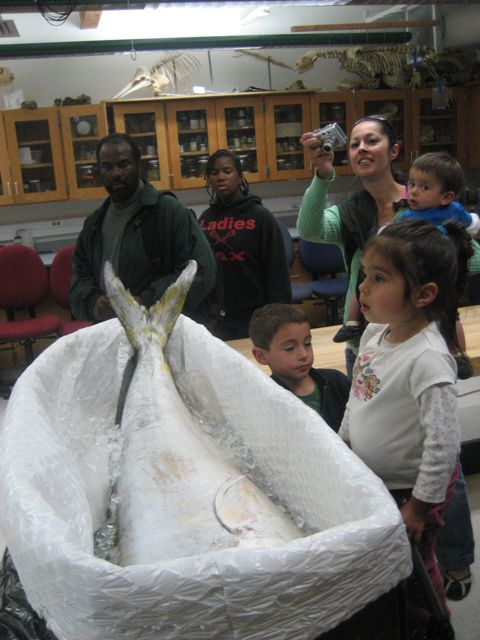

by Erin Loury, Ichthyology Lab
It’s generally a good practice to get the most “bang for your buck” out of a rare opportunity – such as a giant mahi-mahi specimen. After dissecting this impressive fish in our ichthyology class to study it’s feeding musculature and internal anatomy, we put it out on display for our April Open House (butchered side down, of course!).

If you were one of the many wowed by the chance to see such a large fish up close, you may be wondering what became of the specimen after all the crowds went home.
Perhaps you also made a fish print while here at Open House – with a fish you could easily hold in your hands. We didn’t think we had done justice to our massive mahi-mahi until it too had its impression preserved in paint.
Fun fact: Mahi-mahi only live to be 4 or 5 years old, and are some of the fastest growing fish in the world!
And what next for this specimen of multiple lives? Grad student Katie Schmidt is undertaking the task preserving the entire fish for posterity by cleaning its skeleton – one shining vertebrae at a time. Stay tuned to see photos of the work in progress!


